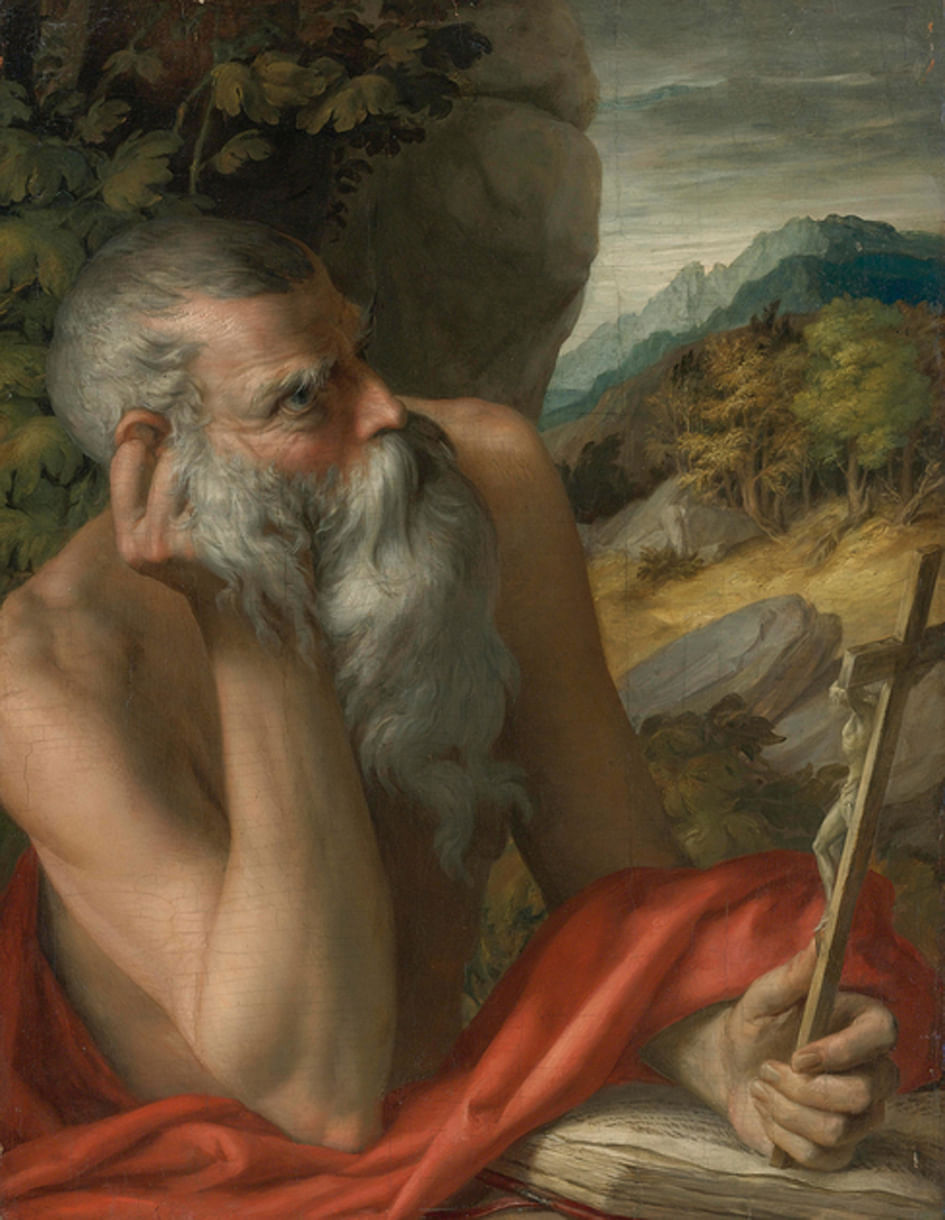AMSTERDAM • A painting attributed to the circle of the 16th-century Italian artist known as Parmigianino has been determined to be a modern fake, according to a complaint filed by Sotheby's auction house in United States District Court in New York on Tuesday.
The company filed the complaint against collector Lionel de Saint Donat-Pourrieres, who consigned the painting to Sotheby's for a 2012 auction, where it sold to another collector for US$842,500.
Last year, Sotheby's asked the buyer to send the painting back for testing, after it received information that it may have passed through a source under investigation before coming into Mr de Saint Donat-Pourrieres' possession.
Through testing of paint samples taken from the oil painting, the auction house says, it has determined that the portrait of St Jerome contains pigments throughout the paint layer that were not invented until the 20th century.
According to the complaint, "each and every one of those samples (none of which were taken from areas of restoration) contained the modern synthetic pigment phthalocyanine green, which was first used in paints nearly four centuries after Parmigianino died".
This is the second painting that has been deemed a fake in what may be a widening old masters' forgery case that could go back several years.

In October, Sotheby's announced that a painting attributed to Frans Hals that it had sold for about US$10 million (S$14.2 million) could not have been painted in the 17th century because it also contained 20thcentury pigments.
St Jerome was tested using similar methods by Orion Analytical, a materials analysis firm specialising in art, which Sotheby's acquired late last year.
Sotheby's is refunding the buyer in full, according to the complaint, and is seeking damages from Mr de Saint Donat-Pourrieres of US$672,000, the amount he received from the sale. Mr de Saint Donat-Pourrieres, an art historian who lives in Luxembourg, could not be reached immediately for comment.
"As was true in the recent case of the fake Frans Hals painting, Sotheby's is honouring its guarantee and fully reimbursing our purchaser," Sotheby's wrote in a statement e-mailed to The New York Times. "We have also exercised our contractual right to cancel the sale, which requires our consignor to reimburse us."
Sotheby's also said it had confirmed a St Jerome link to a European art collector named Mr Giuliano Ruffini.
Mr Ruffini previously sold the work attributed to Frans Hals to London-based art dealer Mark Weiss in 2010, Mr Weiss confirmed.
Mr Ruffini has subsequently been the subject of an investigation by the French police, who seized a painting attributed to Lucas Cranach the Elder that was in the Prince of Liechtenstein's collection. It had formerly been part of Mr Ruffini's collection.
No charges have been filed against Mr Ruffini, who continues to say he never claimed that any of the works were authentic.
Mr Ruffini's lawyer, Mr Philippe Scarzella, confirmed in an e-mail to The New York Times on Tuesday that the Parmigianino was owned by Mr Ruffini and that "there was a dispute about this painting between middlemen and Ruffini around 15 years ago".
He called into question the validity of Orion's scientific investigation, adding: "I have a thick file on this painting and many experts have declared the St Jerome was genuine."
St Jerome was exhibited at the Galleria Nazionale of Parma and the Kunsthistorisches Museum in Vienna in 2003 as an original Parmigianino. Later, it was downgraded to "circle of Parmigianino" because of scholarly debate about its authenticity.
After Sotheby's sold it, it was lent to the Metropolitan Museum of Art from April 2014 to February 2015.
Mr Bob Haboldt, a dealer in old-masters art, said in a telephone interview from Paris that the filing in New York was "a wake-up call and it'll make people look at what they have on the wall or what's on consignment or what's been purchased in the recent past more closely".
He added: "People are scrutinising what's in their collections and I think that's an ongoing process. I don't think it'll shake up the market more than it already has because, if you notice, the sales results at auction and in the market haven't changed."
Mr Johnny van Haeften, a London-based dealer in old-master paintings, said he was not concerned that the market might contain more such fakes.
"All the pictures are so different, they all need to be taken on their own merit," he said in a telephone interview. "As far as the other pictures are concerned, the jury is still out."
NYTIMES
